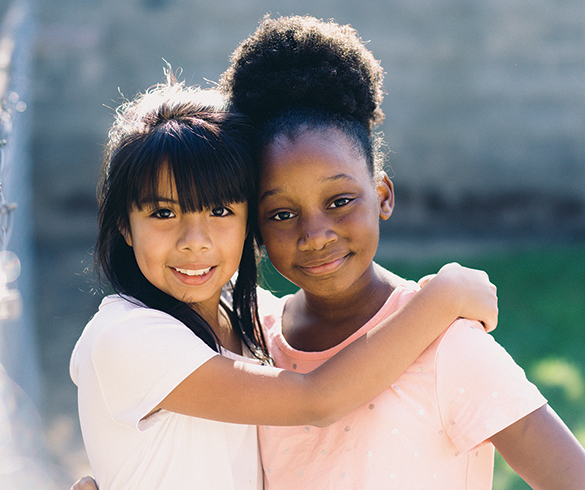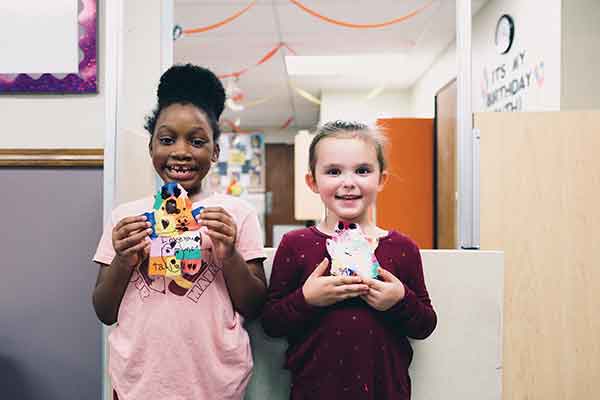
How to Teach Children About Diversity, Equity and Inclusion
Children develop their identities right alongside their abilities to crawl, walk, talk and recognize letters. There’s also a common misconception that children are “colorblind.”
However, studies have found children can show signs of racial bias at an early age, with psychologists from Northwestern University finding children as young as 4 may be picking up on cues of intolerance from adults around them. Children may not understand prejudice or racial bias, but from their earliest days, they absorb and mimic attitudes that are held by the adults in their lives.
 “For children, differences are a way of learning about themselves and others, a way of building their sense of self and a place in their family and community,” said Dr. Elanna Yalow, KinderCare Education’s chief academic officer. “Children will naturally look to their parents and caregivers for explanations about the diversity they see in their world and what those differences can or should mean. That’s why it’s so important to help even the youngest children learn how to embrace diversity in a way that’s respectful and celebrates different cultures, backgrounds and experiences.”
“For children, differences are a way of learning about themselves and others, a way of building their sense of self and a place in their family and community,” said Dr. Elanna Yalow, KinderCare Education’s chief academic officer. “Children will naturally look to their parents and caregivers for explanations about the diversity they see in their world and what those differences can or should mean. That’s why it’s so important to help even the youngest children learn how to embrace diversity in a way that’s respectful and celebrates different cultures, backgrounds and experiences.”
Understanding and addressing issues of diversity, equity and inclusion can be challenging, which is why some parents may shy away from having these conversations with their children. Yalow offers these tips to help parents lay the foundation for honest and developmentally appropriate discussions.
Start by acknowledging differences. To ignore differences among people is to ignore a part of the person. When children ask, “Why does…?” questions, rather than shy away or tell them, “We don’t ask those questions,” embrace the moment and answer in simple, direct language. For example, explaining that melanin creates different skin tones or people may use wheelchairs because their legs work differently, and they need help moving around. By answering their questions, children can learn differences aren’t bad or embarrassing – they’re what make each person unique and special.
Books are an easy way to help children learn about diversity because stories are natural conversation starters. Look for books with diverse main characters who have different races, ethnicities, backgrounds and abilities, and reflect a number of family structures. As you read together, talk about the differences and similarities between the characters and your children using simple, clear language. It’s important to ensure your children see themselves in the toys, books and media around them. Children feel welcome and important when their identity and their families’ identities are represented in their world.
Build empathy. Go beyond the common refrain, “put yourself in someone else’s shoes,” and ask your children why it is important to understand other people’s perspectives. Help your children think of times they learned something about someone else and how that knowledge helped them be better friends or family members. Empathy can help children comprehend the lasting, harmful impact inequality and exclusion can have and show them why it’s important for them to understand, respect and appreciate differences.
“Learning about and celebrating diversity, equity and inclusion are lifelong commitments,” Yalow said. “Children have the benefit of approaching these topics with a fresh perspective and a strong sense of what’s fair and unfair – skills that will help them build a better future for everyone.”
To learn more about talking with your children about differences, visit kindercare.com/dei
Source:
KinderCare


